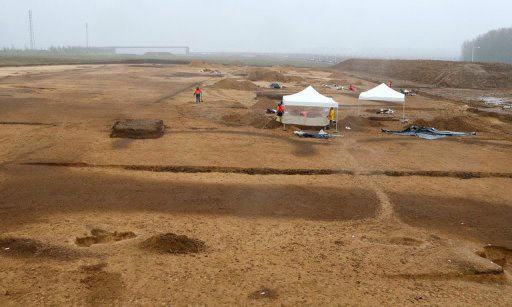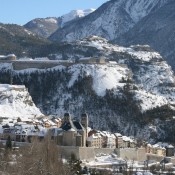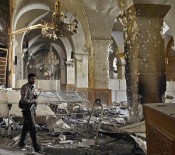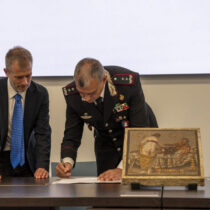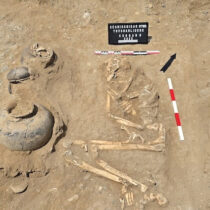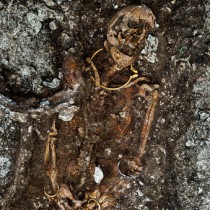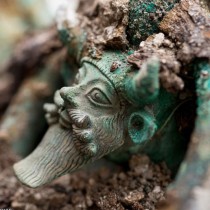In a muddy field on the outskirts of Troyes, France, located between a motorway and a meander of the Seine southeast of Paris, archaeologist Emilie Millet is crouched at one of 14 burial sites that have been uncovered in recent weeks.
The site is yielding a stunning array of finds, including five Celtic warriors, whose weapons and adornments attest to membership of a powerful but long-lost elite. Millet points to a metal framed shield found among the grave goods, stating that she has not seen anything like it before.
The warriors were not alone in their journey to the afterlife. Several women were found buried along them, bearing pieces of jewellery pointing to high status: twisted-metal necklaces known as torcs, and large bronze brooches decorated with precious coral. In one grave, a woman was buried next to a man, separated by a layer of soil, speaking of a close but as-yet unfathomable bond.
Analysis of the scabbards, whose decoration changes according to military fashion as well as the types of jewellery suggest that the necropolis dates between 325 and 260 BC and can be ascribed to a period known as La Teine, that ran from about the 5th century BC to the first century AD.
La Tene, whose name comes from an archaeological site in Switzerland, marks the glory years of the Celts. During this time, the Celts expanded from their core territory in central Europe to as far afield as northern Scotland and the Atlantic coast of Spain. As they clashed with the emerging Roman empire, Roman writers did not delay in recording the battles, portraying the invaders as pale-skinned savages, dressed in breeches with bleached hair, who cut off their enemies’ heads, preserving those of high rank in cedar oil. The barbarian image, though, has been dispelled by historical research in recent decades.
Archaeological finds as well as a careful study of the sources have demonstrated a complex civilisation that had a mastery of metal and a trading system which spanned Europe and generated great wealth.
The find at Bucheres raises several questions, for there has never been any trace of major Celtic settlement in this neighbourhood. The graves were uncovered at a depth of about two metres (6.5 feet) but if they had any external markers, none remains. An earlier civilisation, from the Bronze Age, left a line of burial mounds nearby, “which would have been visible for miles (kilometres) around,” said Inrap archaeologist Cecile Paresys.
Just as intriguing, the excavation has yet to find any pottery or evidence of food, which were often added to Iron Age burials to sustain the dead in the spirit world. No remains of children have been found, although this absence is common to Celtic necropoleis, something that anthropologists are at a loss to explain.
Years of patient forensic work lie ahead to tease out clues about how these people lived and died. In the meantime, the remains are being recorded where they lie before being gently prised from the earth and preserved.
